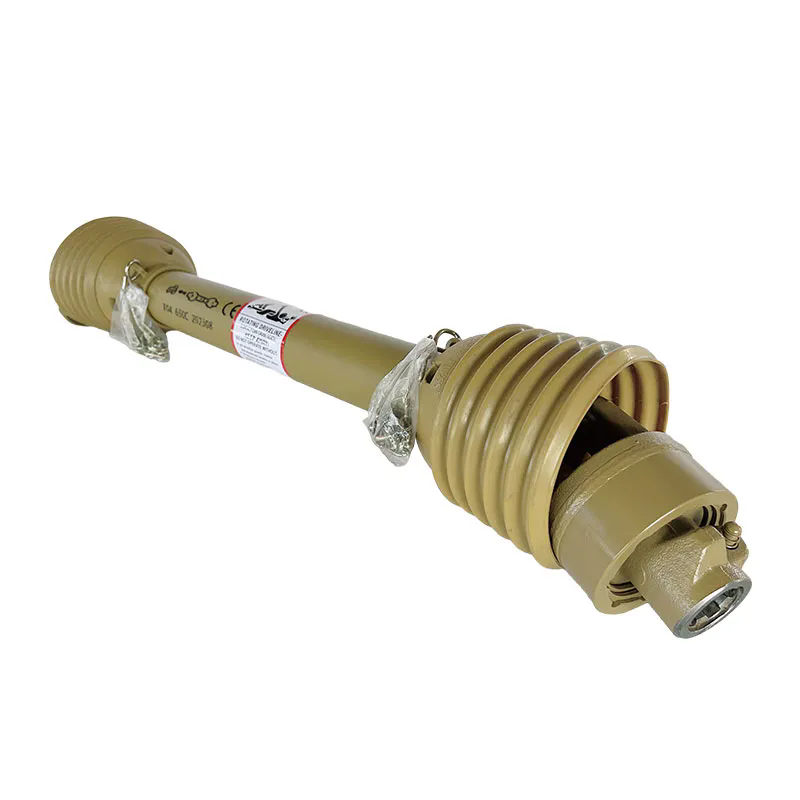What Role Does the Power Train Axle Play in Your Vehicle's Performance?
2024-11-07
When it comes to the mechanics of a vehicle, many parts work together to ensure smooth operation, but some components are more vital than others. One such key element is the power train axle. While often overlooked, this component is central to the overall performance and safety of your vehicle. But what exactly is the power train axle, and why is it so important?
What Is a Power Train Axle?
A power train axle refers to the system of shafts and gears that transfers power from the engine to the wheels, enabling the vehicle to move. It is an integral part of a vehicle’s drivetrain, which consists of all components that work together to generate and deliver power to the wheels. The power train axle itself connects the transmission and differential to the wheels, allowing torque to be distributed efficiently.
There are two main types of axles in vehicles:
- Front Axles: These are primarily found in vehicles that have a front-wheel-drive system. They play an essential role in transferring power to the front wheels.
- Rear Axles: In rear-wheel-drive vehicles, the rear axle is responsible for transmitting power to the rear wheels. It often features a differential that allows the wheels to rotate at different speeds.
For four-wheel-drive vehicles, axles in both the front and rear drive the vehicle, each playing a role in ensuring power is distributed evenly across all wheels.
Why Is the Power Train Axle Essential?
The power train axle does more than just facilitate movement. Its role is multifaceted, and it contributes to several aspects of vehicle performance:
1. Power Distribution
The primary function of the power train axle is to transfer the engine’s power to the wheels. The axle does this by transmitting rotational force from the differential and drive shaft, which allows your vehicle to move forward or backward. This direct link between the engine and the wheels is what ultimately makes the vehicle functional.
2. Efficiency in Torque Transmission
Axles are designed to handle the immense torque generated by the engine and deliver it efficiently to the wheels. The proper functioning of the axle ensures that this torque is evenly distributed, providing consistent power to the wheels and preventing issues like wheel slippage.
3. Load Support and Stability
In addition to transmitting power, axles also carry the weight of the vehicle. They are responsible for supporting the weight of the engine, transmission, and other components. The axle ensures that the vehicle maintains its balance, even when carrying heavy loads or when subjected to sharp turns and rough road conditions.
4. Handling and Performance
The design and condition of the power train axle affect how well your vehicle handles. A properly aligned and well-maintained axle can improve the vehicle’s stability and control, especially when navigating corners or uneven terrain. Any wear and tear or misalignment of the axle can lead to handling issues, such as poor cornering and loss of traction.
What Happens if the Power Train Axle Fails?
When the power train axle is damaged or malfunctioning, it can severely impact your vehicle's performance and safety. Some potential consequences of axle failure include:
- Loss of Power to the Wheels: A damaged or broken axle can result in the vehicle losing power, making it impossible to drive.
- Unusual Noises: If the axle is worn out or damaged, you may hear clunking or grinding sounds coming from the vehicle. This could be a sign of a serious issue that requires immediate attention.
- Vibration and Poor Handling: A malfunctioning axle may cause the vehicle to shake or vibrate while driving, particularly at higher speeds. This can be distracting and dangerous.
- Uneven Tire Wear: An axle that is misaligned or damaged can cause uneven tire wear, which could lead to costly tire replacements and decreased safety on the road.
How to Maintain Your Power Train Axle
To ensure the longevity and functionality of your power train axle, regular maintenance is key. Here are some tips to keep your axle in top condition:
1. Regular Inspections
Have your axle inspected regularly by a professional mechanic, especially if you notice any unusual noises, vibrations, or handling issues. Early detection of problems can prevent more serious and costly repairs down the road.
2. Lubrication
Proper lubrication of the axle components is crucial to prevent friction and wear. Make sure the axle joints and bearings are well-lubricated to minimize the risk of damage and ensure smooth operation.
3. Avoid Overloading
Overloading your vehicle can put excessive stress on the axle, leading to premature wear and potential failure. Always adhere to the manufacturer’s weight limits to keep the axle functioning correctly.
4. Wheel Alignment
Misaligned wheels can strain the axle and lead to uneven wear. Ensure your wheels are properly aligned and balanced to reduce stress on the power train axle and improve overall vehicle performance.
5. Drive Responsibly
Avoid aggressive driving and sudden maneuvers, as these can put excessive pressure on the axle. Smooth driving not only extends the life of the axle but also contributes to better fuel efficiency and vehicle handling.
Conclusion: How Important Is the Power Train Axle?
The power train axle may not be the most glamorous part of your vehicle, but it’s certainly one of the most important. It plays a crucial role in transferring power to the wheels, supporting the vehicle’s weight, and ensuring smooth and efficient handling. Whether you drive a car, truck, or SUV, understanding the significance of the power train axle—and maintaining it properly—can help you avoid costly repairs and improve your vehicle’s overall performance.
So, the next time you’re behind the wheel, remember: the power train axle is quietly working to keep you moving safely and efficiently!



